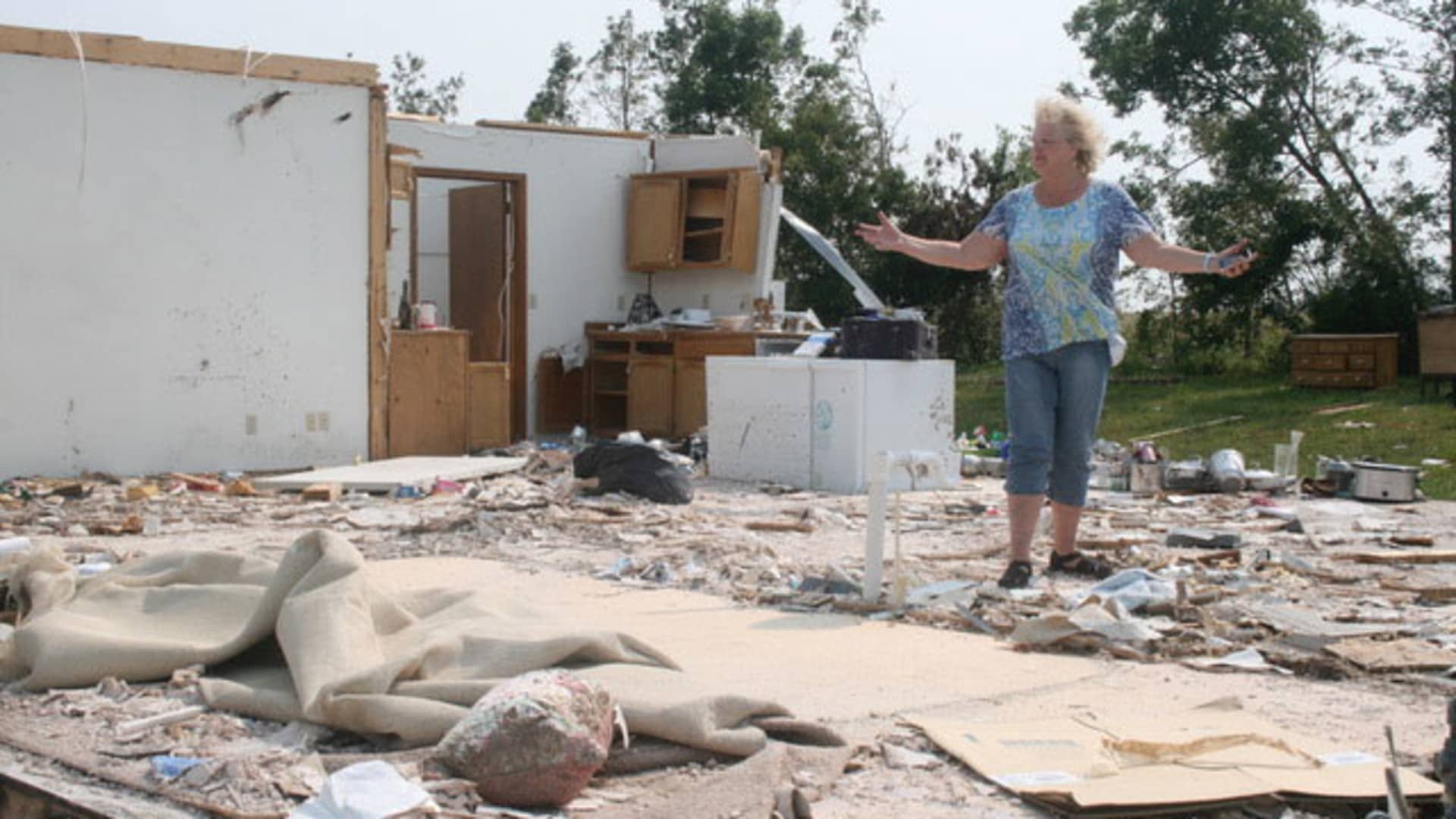May 22, 2011: The Day Joplin, Missouri Was Changed Forever
It was a picturesque day in Joplin, Missouri on May 22, 2011. Families and friends were enjoying the outdoors, oblivious to the impending disaster. But then, everything changed. The sky darkened, and the clouds started to swirl. Troy Bolander, a Kansas native, recognized the ominous signs and quickly sought shelter in his crawl space. Ann Leach, a life coach, was also at home when the tornado sirens blared. She took cover on her bathroom floor, praying for safety. Little did they know, these individuals were about to experience the destructive force of one of the deadliest tornadoes in U.S. history.
Survivors Amidst the Devastation
The EF5 tornado that struck Joplin claimed the lives of 161 people, leaving a trail of destruction in its wake. Troy Bolander and Ann Leach were among the fortunate few who survived. The damage caused by the tornado amounted to nearly $3 billion, earning it the title of the costliest tornado in U.S. history.
The Billions Spent on Tornadoes
Tornadoes continue to wreak havoc in the United States, resulting in massive financial losses. Between 2018 and 2023, there have been 17 tornado-related disasters with damages exceeding one billion dollars. Unfortunately, the costs are only expected to rise.
America’s Tornado Problem: A Billion-Dollar Nightmare
The United States experiences approximately 1,200 tornadoes each year, more than any other country in the world. Anne Cope, chief engineer at the Insurance Institute for Business & Home Safety, affirms that tornadoes pose a significant problem in the U.S. In 2022 alone, the nation witnessed two separate billion-dollar tornado outbreaks. To measure tornado intensity, the Enhanced Fujita (EF) scale categorizes tornadoes on a range from EF0 to EF5. This scale was developed based on extensive field research conducted by wind engineers who studied the damage caused by tornadoes. The rating reflects the resilience of the buildings in the affected community.
The EF5 tornado that struck Joplin in 2011 had estimated wind speeds of up to 200 miles per hour, causing extensive destruction. Around 7,500 residential dwellings and 553 businesses were damaged or destroyed. Despite the devastation, the community of Joplin banded together to rebuild, demonstrating incredible strength and resilience. Rebuilding, however, is an arduous and time-consuming process, often taking years to restore communities, homes, and businesses. It requires thoughtful planning to ensure greater resilience in the face of future tornadoes.
Shifting Tornado Patterns: No Region Is Safe
Although the central Great Plains, including states like Kansas and Texas, have historically experienced the highest tornado activity, tornadoes can occur anywhere in the U.S. The Southeast and Midwest regions, such as Memphis, Indianapolis, and Nashville, have witnessed an increasing frequency of tornadoes. This shift is significant as it encompasses a larger population and more vulnerable infrastructures, leading to greater potential for tornado disasters.
An Unstoppable Force Meets an Immovable Object: Investing in Resilience
While tornadoes remain a force to be reckoned with, there are measures communities can take to minimize damage. Engineers have developed techniques to construct stronger buildings capable of withstanding high winds. Building resiliently comes at a higher initial cost, but it offers protection and prevents damage typically caused by weaker structures. The Insurance Institute for Business and Home Safety (IBHS) recommends specific measures such as installing wind-rated garage doors and opting for stronger roofing materials during renovations. In the case of Joplin, 84% of deaths resulted from building and structural failures. Consequently, the city implemented changes to safeguard its structures and population, including new regulations requiring anchor bolts and hurricane clips.
Unfortunately, not all areas in the U.S. have implemented building codes. As of November 2020, 65% of counties, cities, and towns lack modern building codes. Anne Cope emphasizes the need for comprehensive building codes nationwide to ensure protection against tornadoes. Although financial considerations often influence the decision to adopt building codes, federal resources are available to support resilience efforts. Organizations like FEMA have released guidelines and strategies to advance building code efforts and enhance nationwide resiliency.
Confronting the Billion-Dollar Tornado Problem
Tornadoes pose a significant and costly threat to the United States. However, with the knowledge and tools available, communities can work towards minimizing damage and creating a safer future. By investing in resilient building practices, implementing comprehensive building codes, and utilizing federal resources, the U.S. can mitigate the billion-dollar tornado problem. Let us strive to build a more resilient nation that can withstand the devastating force of tornadoes.
Watch the video above for an in-depth look at how the U.S. is addressing its billion-dollar tornado problem and striving to create a safer future.
Denial of responsibility! Vigour Times is an automatic aggregator of Global media. In each content, the hyperlink to the primary source is specified. All trademarks belong to their rightful owners, and all materials to their authors. For any complaint, please reach us at – [email protected]. We will take necessary action within 24 hours.


